
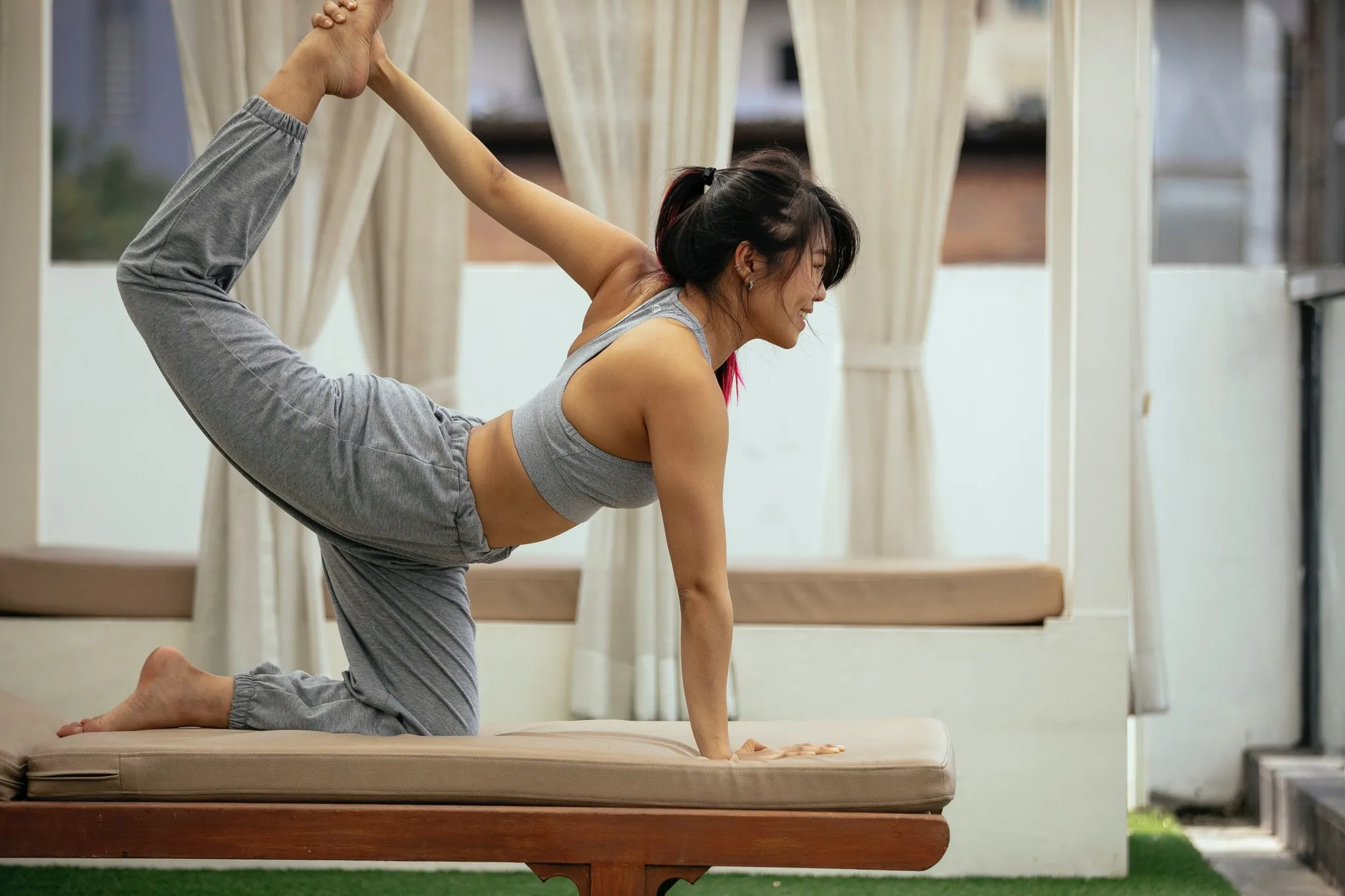
Multiple sclerosis (MS) is a chronic autoimmune disease that affects the central nervous system. It can cause a range of symptoms, including fatigue, muscle weakness, and difficulty with balance and coordination. While there is no cure for MS, practicing yoga can help manage symptoms and improve overall health and well-being. Before starting a yoga practice, it's important to consult with a healthcare provider to ensure safety and effectiveness.
Stress and Fatigue Reduction: Yoga provides a calming and relaxing effect on the body and mind, which can help ease the mental and physical stresses of MS. It can lead to a reduction in fatigue levels and promote a more peaceful state of mind.
Improved Balance and Coordination: MS can cause issues with balance and coordination, but yoga can help improve these areas. The practice of yoga involves movements that require balance and coordination, which can improve the function of the nervous system.
Increased Flexibility and Strength: Yoga poses require the use of muscles that may not be utilized in everyday activities. Practicing yoga regularly can lead to increased flexibility and strength, which can improve overall fitness levels.
Respiratory Function Improvement: MS can affect respiratory function, but yoga can help improve breathing patterns. Certain yoga practices involve deep breathing exercises that can help increase lung capacity and oxygenation of the body.
Pain Management: MS can cause pain and discomfort, but yoga can be an effective tool for managing these symptoms. The gentle movements of yoga can help relieve tension and tightness in the muscles, which can reduce pain and improve overall comfort.
Improved Overall Health and Well-Being: By providing a range of physical and mental benefits, yoga can improve overall health and well-being for individuals with MS. Regular practice can promote a sense of inner calm and peacefulness, which can positively impact all areas of life.
[inline-CTA-1]
Seated or chair yoga poses are ideal for individuals with limited mobility, while standing poses are suitable for those with greater mobility. Focus on poses that improve balance, coordination, and flexibility, such as:
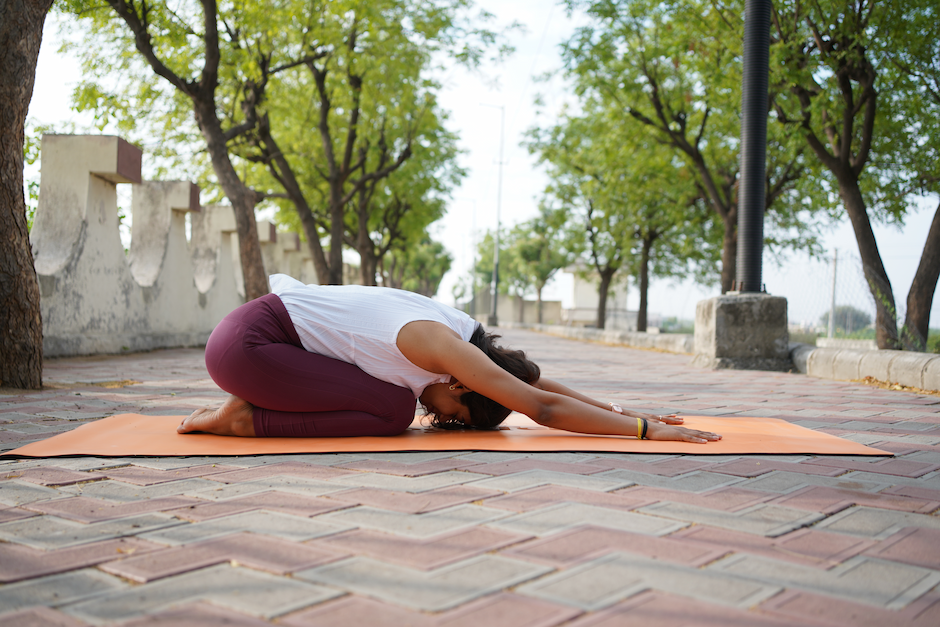
Sit on your heels with your knees apart, and fold your torso forward, resting your forehead on the floor. Stretch your arms forward, palms facing down. Hold for 5-10 deep breaths.
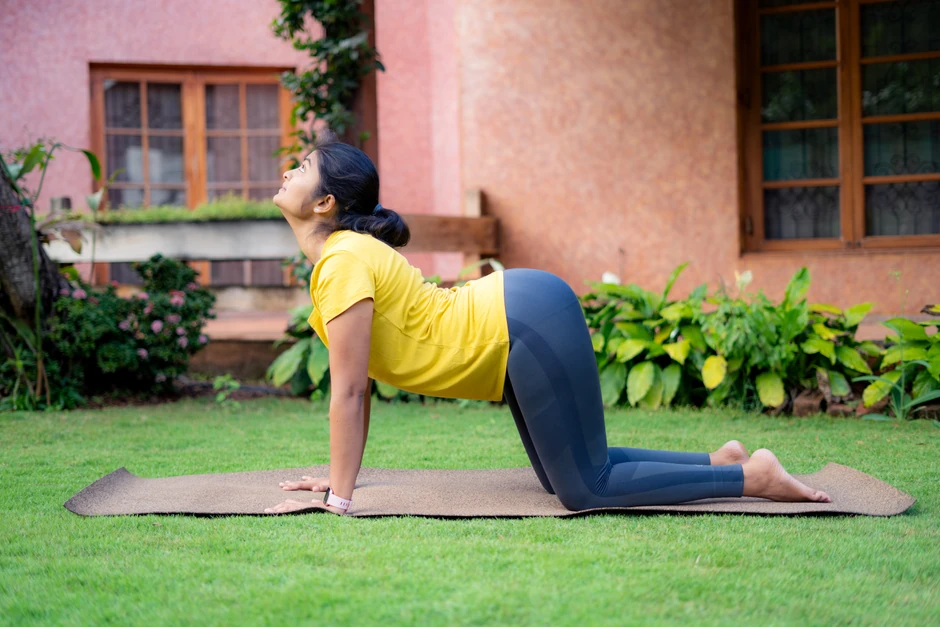
Start on your hands and knees, with your wrists under your shoulders and knees under your hips. Inhale and lift your chest and tailbone towards the ceiling (Cow pose), and exhale, rounding your spine towards the ceiling (Cat pose). Repeat for 5-10 breaths.
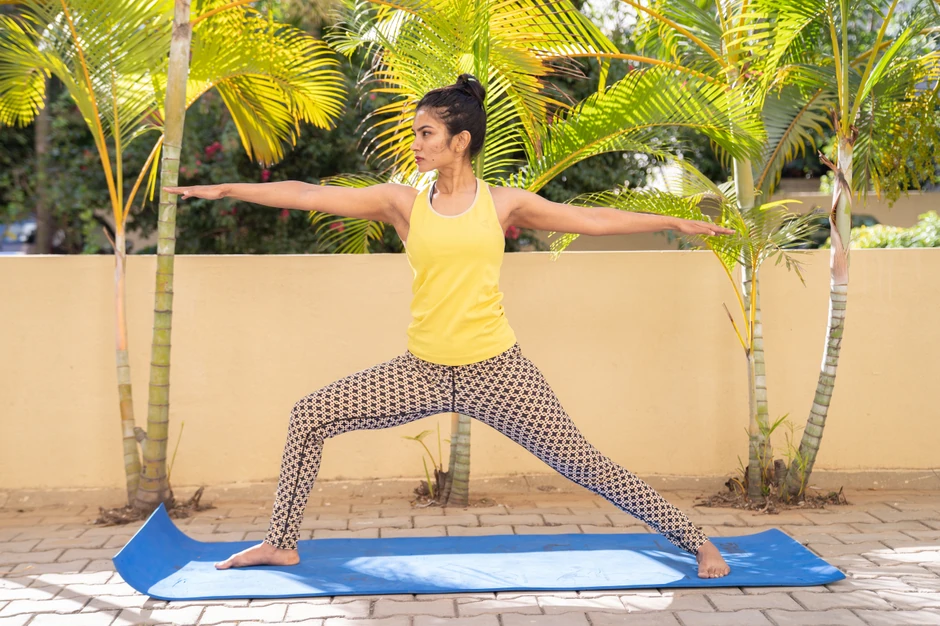
From a standing position, step your left foot back and turn it out 90 degrees. Bend your right knee, keeping it directly over your ankle. Extend your arms out to the sides, and gaze over your right hand. Hold for 5-10 breaths and repeat on the other side.
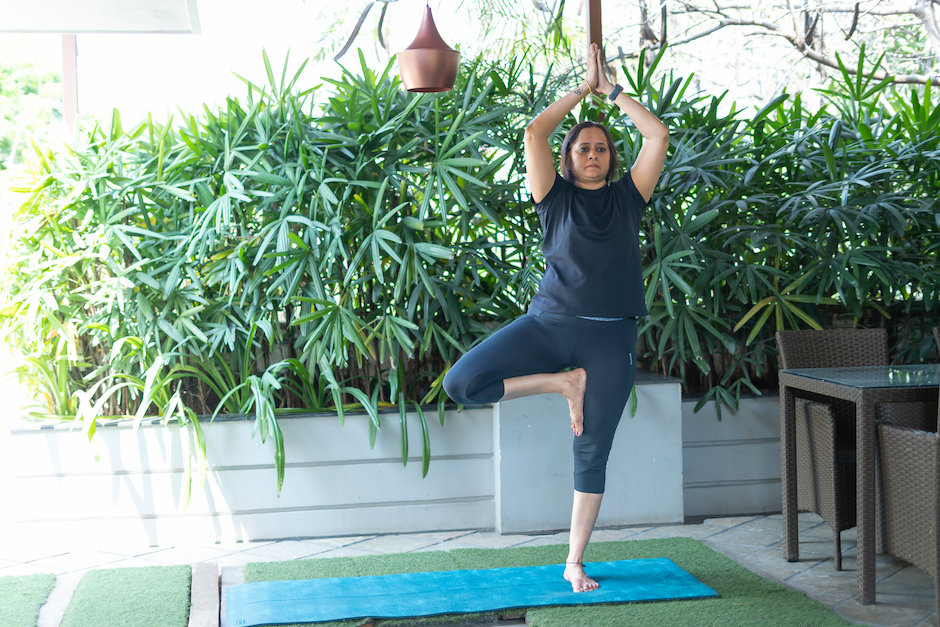
Stand with your feet hip-distance apart, and shift your weight onto your left foot. Place your right foot on your left thigh, and balance here. Place your hands in prayer position at your heart or extend your arms overhead. Hold for 5-10 breaths and repeat on the other side.
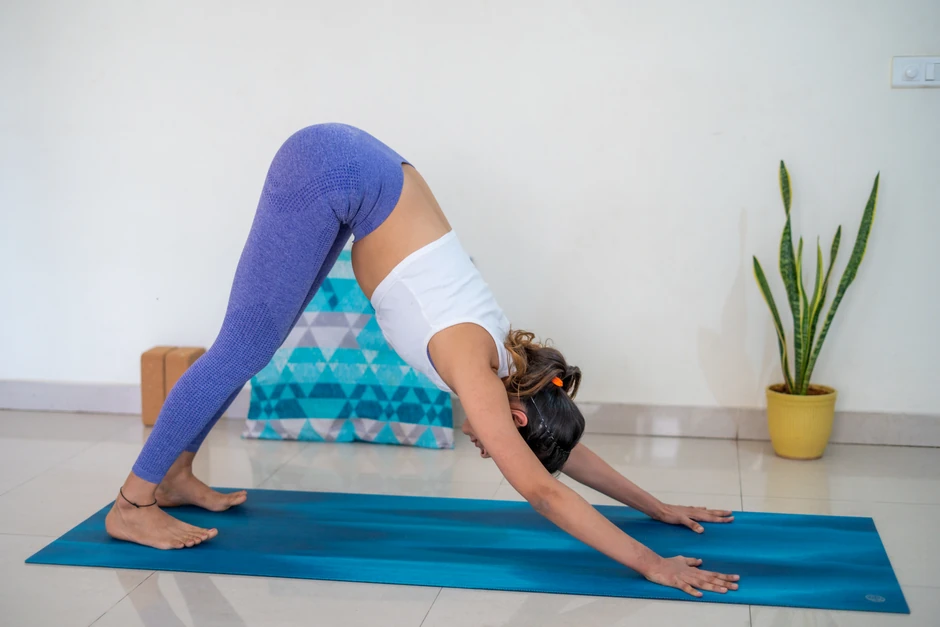
From a tabletop position, walk your hands forward and lift your hips up and back, forming an inverted V-shape with your body. Press your hands and feet into the ground and hold for 5-10 breaths.
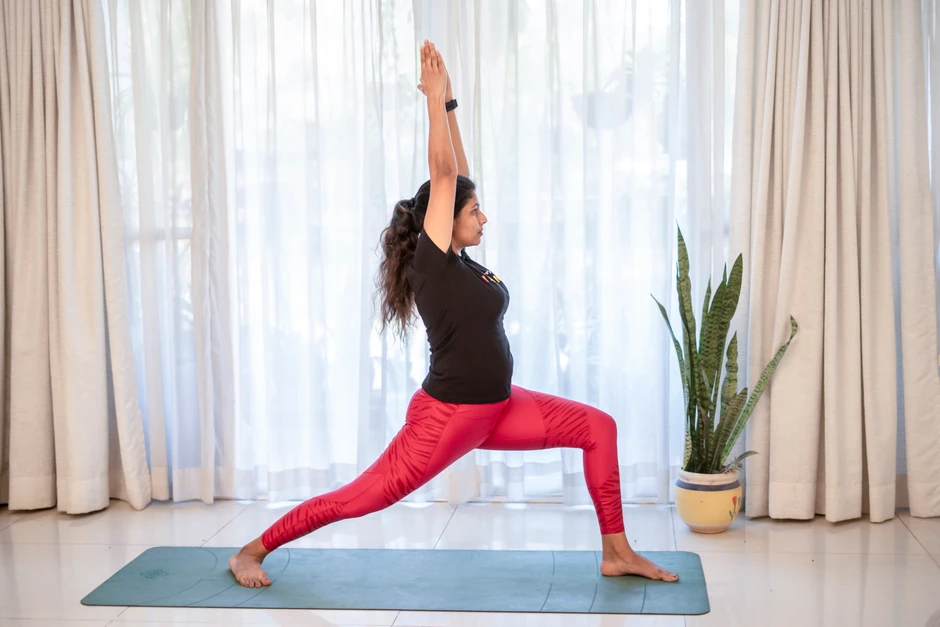
From a standing position, step your left foot back and turn it out 45 degrees. Bend your right knee, keeping it directly over your ankle. Extend your arms overhead and gaze forward. Hold for 5-10 breaths and repeat on the other side.
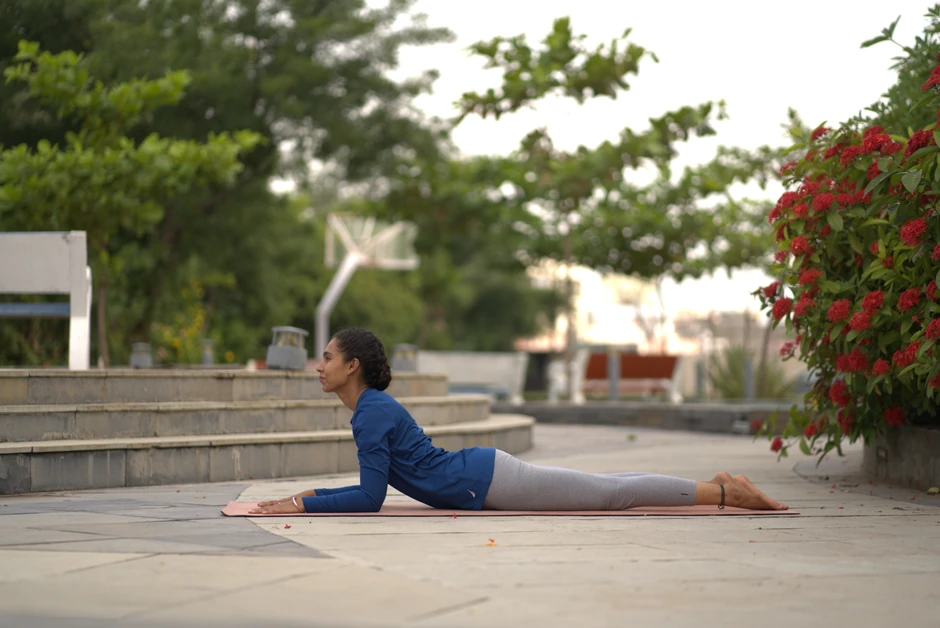
Lie on your stomach with your elbows under your shoulders and forearms on the ground. Press into your forearms and lift your chest up, keeping your shoulders relaxed. Hold for 5-10 breaths.
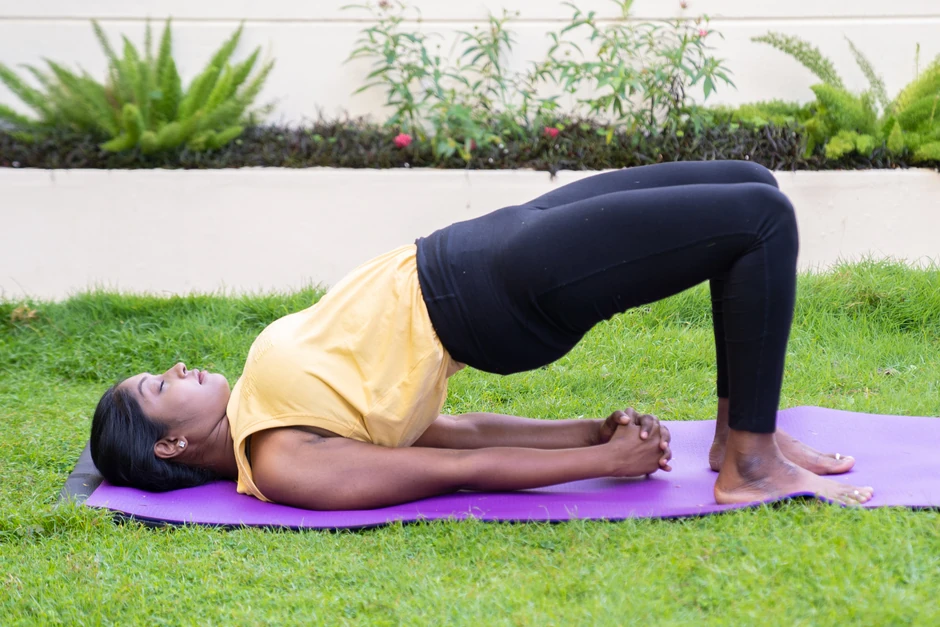
Lie on your back with your knees bent and feet hip-distance apart. Press into your feet and lift your hips up, keeping your arms and shoulders on the ground. Hold for 5-10 breaths.
_optimized.webp)
From a standing position, step your left foot back and turn it out 90 degrees. Extend your arms out to the sides and reach forward with your right hand, placing it on your shin or a block. Gaze up at your left hand. Hold for 5-10 breaths and repeat on the other side.
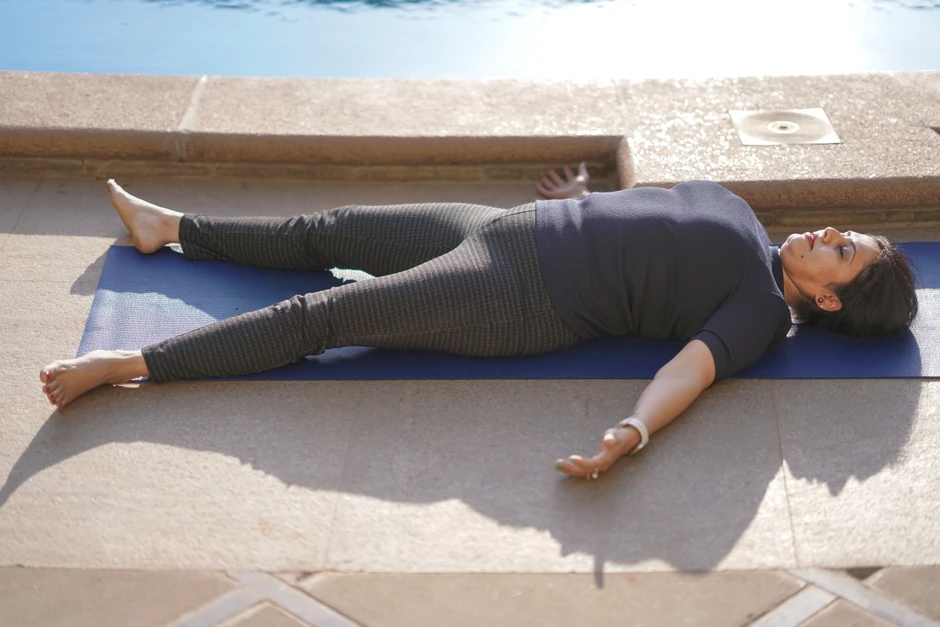
Lie on your back with your arms and legs extended. Close your eyes and focus on your breath, allowing your body to fully relax. Stay here for at least 5-10 minutes.
[inline-CTA-2]
Here are some breathing and meditation practices that can be incorporated into a yoga practice for multiple sclerosis symptom management:
Deep Breathing: Sit comfortably and take deep, slow breaths through the nose, filling the lungs completely. Exhale slowly through the nose, releasing all the air. Repeat for several minutes.
Alternate Nostril Breathing: Sit comfortably and use the thumb to close one nostril while inhaling through the other. Then, use the ring finger to close the opposite nostril while exhaling through the first. Repeat for several minutes.
Mindful Breathing: Focus on the sensation of the breath as it enters and leaves the body. If the mind wanders, gently bring the focus back to the breath.
Body Scan Meditation: Lie down or sit comfortably and bring attention to each part of the body, starting from the toes and moving up to the head. Notice any sensations or tensions and release them as you move through each part.
Practicing yoga can provide many benefits for individuals with multiple sclerosis, including reduced stress and fatigue, improved balance and coordination, and increased flexibility and strength. Incorporating yoga poses and practices into your routine can help manage symptoms and improve overall health and well-being. Remember to consult with a healthcare provider and find a qualified yoga teacher to begin a safe and effective practice.

Receive personalized guidance tailored to your unique fitness goals, live with a dedicated coach—no credit card required.